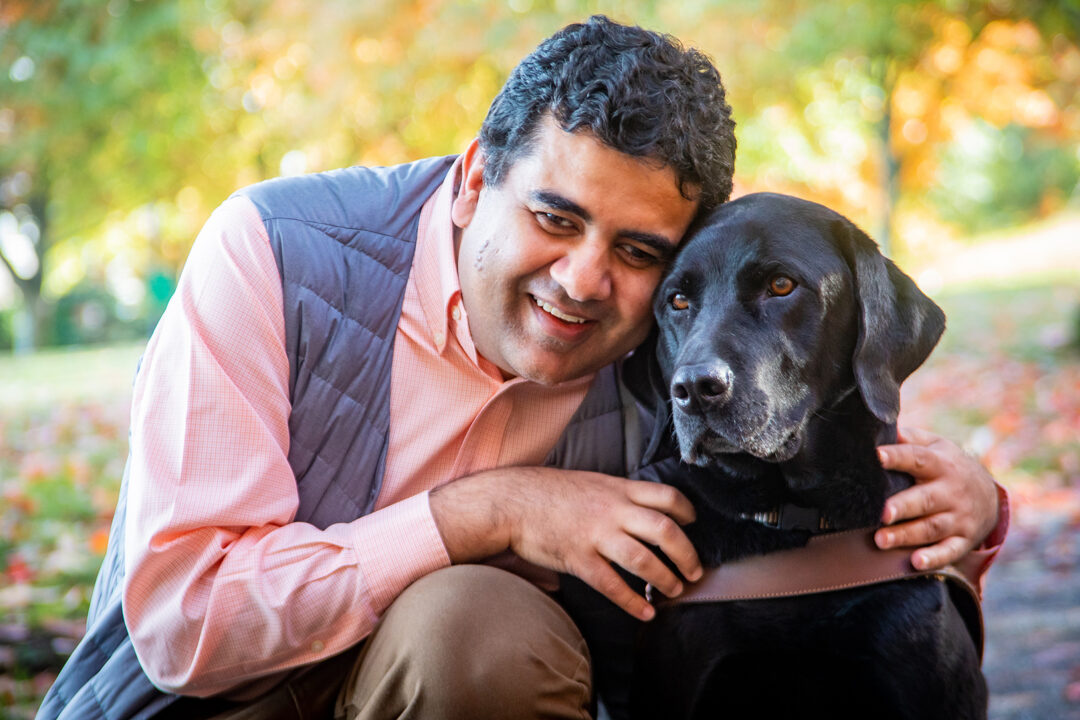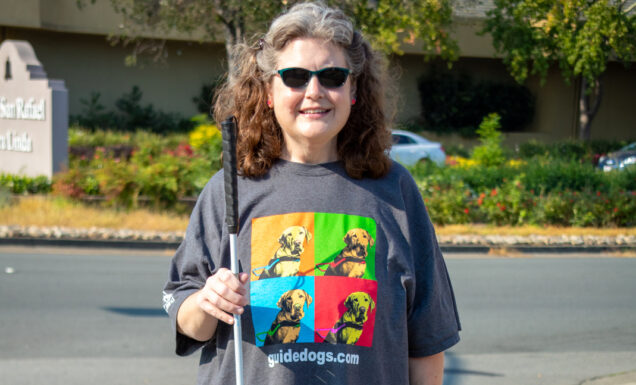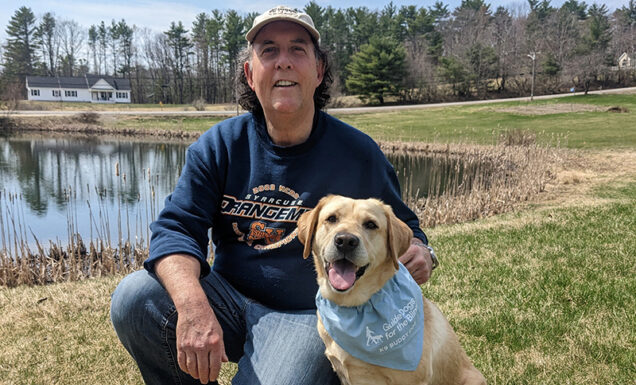Guide Dog Self Screening
See if you're ready for a guide dog.
Before you decide to apply to get a guide dog from Guide Dogs for the Blind, it's important to assess your interest and readiness. Below, you'll find a series of questions you can use to help you make your decision.


- Have you been declared legally blind by an ophthalmologist?
- Do you walk to destinations by yourself with a cane, or a guide dog? Does your routine include regular outings for work, school, errands, or exercise, etc?
- Are you confident in your orientation and mobility skills (e.g. are you able to hold a fairly straight line while walking, keep track of where you are on route, use traffic sounds to determine when to cross a street)? Are you comfortable generalizing these skills to environments other than your home area?
- Are you able to comfortably walk a distance of roughly one mile, on a daily basis? If not, are you willing to develop the stamina and ability to walk this distance? If you need to take a short rest during a walk of this length, you may still benefit from having a guide dog.
- Are you willing to travel with less tactile awareness of your environment? Consider that guide dogs are trained to avoid obstacles rather than locate them (as a long cane does).
- If you have a degree of functional vision, do you feel that you can trust a dog to guide you even if the dog picks a slightly different path than you would have chosen? The class curriculum can include partial occluders and/or blindfolds to assist with learning to follow your dog appropriately in cases where you might be tempted to travel visually instead.
- Living and working with a guide dog involves interdependence between human and dog. Do you accept the responsibility to be a consistent and fair leader in such a partnership?
- A guide dog will need quality food, several opportunities each day to relieve, grooming, veterinarian visits, playtime, and affection from its partner. Can you provide for the physical and emotional needs of this working companion?
- Are those who live with you comfortable with having a dog in the home and are they willing to comply with some basic guidelines Guide Dogs for the Blind provides regarding the care, control and behavior of your dog? What about your friends and co-workers?
- Would you enjoy having more contact with the public? Partnering with a guide dog frequently attracts the admiration and interest of people around you.
- Do you like the idea of having a dog around when your guide is off duty? A guide dog is usually with you twenty-four hours a day, seven days a week. A significant portion of having a guide dog is simply enjoying their companionship.
Yes! I'm ready for a guide dog!
If you're confident you're ready for a guide dog, please visit our Client Program Applications page to get started.

Need to improve your orientation & mobility skills in preparation to get a guide dog? See if our O&M Immersion Program is right for you.

Is a guide dog not a good fit for you right now, but you'd like the companionship of a dog? Perhaps our K9 Buddy Program could meet your needs.
